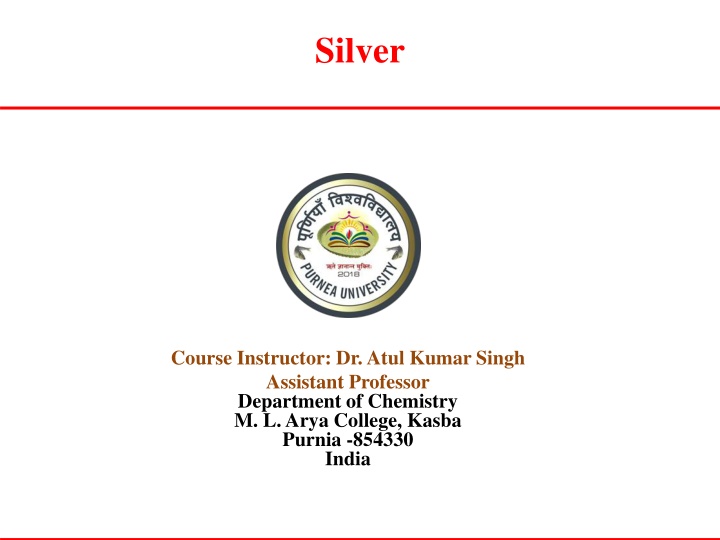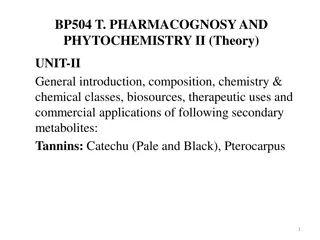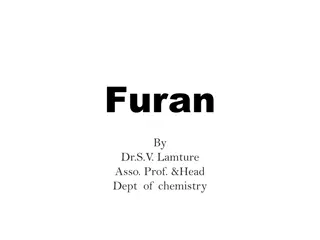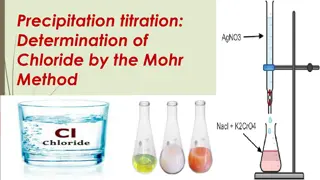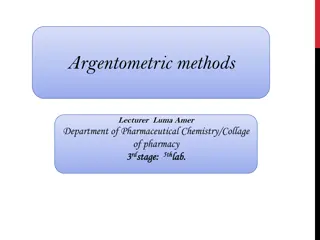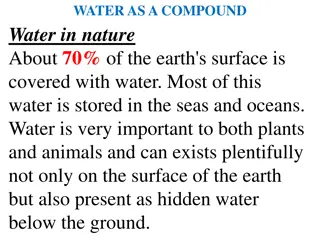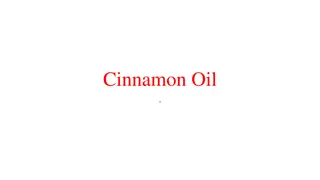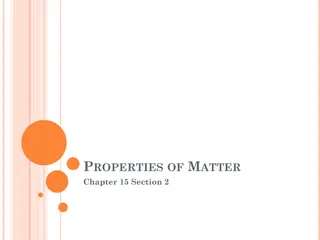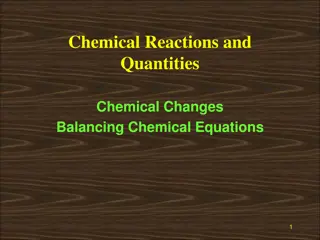Chemical Properties and Uses of Silver: A Comprehensive Overview
Dr. Atul Kumar Singh, Assistant Professor at M.L. Arya College, provides detailed information on the chemical properties of silver, including its reactions with air, halogens, acids, alkali cyanides, alkalis, and sulphur. The text also highlights the various uses of silver in coinage, ornaments, and decorative pieces, emphasizing its alloying with copper for different applications.
Download Presentation

Please find below an Image/Link to download the presentation.
The content on the website is provided AS IS for your information and personal use only. It may not be sold, licensed, or shared on other websites without obtaining consent from the author.If you encounter any issues during the download, it is possible that the publisher has removed the file from their server.
You are allowed to download the files provided on this website for personal or commercial use, subject to the condition that they are used lawfully. All files are the property of their respective owners.
The content on the website is provided AS IS for your information and personal use only. It may not be sold, licensed, or shared on other websites without obtaining consent from the author.
E N D
Presentation Transcript
Silver Course Instructor: Dr. Atul Kumar Singh Assistant Professor Department of Chemistry M. L. Arya College, Kasba Purnia -854330 India
Chemical Properties Silver has a poor chemical activity. Action of Air: Silver is not attacked by air or moisture. Action of halogens: When heated with current of halogen gas or vapor it forms the corresponding halide.
2. Action of acids Silver is not affected by non-oxidising acids like HCl, dilute H2SO4. However, it reacts with nitric acid and conc. Sulphuric acid forming silver nitrate and silver sulphate.
Action of alkali cynides Silver dissolves in potassium cyanide or sodium cyanide in the presence of air due to formation of argentocyanide complex.
Action of alkali Alkalies have no action on silver even when fused. Action of Sulphur Silver has great affinity for silver. When silver is heated with sulphur powder, it forms silver sulphide.
Uses of silver Silver is used in making of coins, ornaments, decorative pieces etc. It is alloyed with copper. Silver alloy used for ornaments contain about 80% silver and 20 % copper. A silver coin generally has composition Silver 50%, Cu 40%, Zn 5% and Ni 5%.
